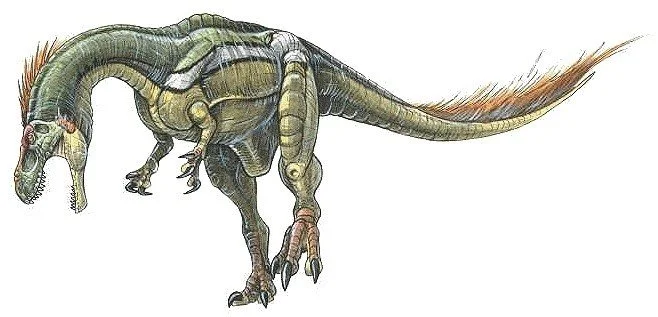Eotyrannus (Dawn Tyrant)
Basic facts
15 feet (4.5m) length
Early Cretaceous
Europe
Carnivore
Eotyrannus, meaning "dawn tyrant," was first discovered on the Isle of Wight, United Kingdom, by a team of paleontologists led by Darren Naish in 2001. It was officially described in 2001 by Hutt, Martill, and Barker. Eotyrannus is classified within the superfamily Tyrannosauroidea, a group of medium to large-sized theropod dinosaurs. It lived during the Early Cretaceous period approximately 140 to 132 million years ago.
Eotyrannus was a relatively small theropod dinosaur, measuring approximately 15 feet (4.5 meters) in length. Despite the specimen's length of up to 4.5 meters (15 ft), it does not represent the size of an adult individual. Instead, it is likely from a subadult, as indicated by the absence of fusion in the neurocentral and sacral sutures. It exhibited a mix of features found in earlier theropods and the more familiar characteristics seen in later tyrannosaurs. While it lacked the imposing size and power of its iconic descendant Tyrannosaurus rex, Eotyrannus played a pivotal role in the early evolutionary history of the tyrannosaurs.
One distinguishing feature of Eotyrannus was its long and slender hind limbs, suggesting that it was a fast and agile runner. Its arms were relatively small, with three-fingered hands, a common trait among theropods. Eotyrannus likely possessed feathers or feather-like structures, although the extent and appearance of its integument remain subjects of ongoing research and debate.
